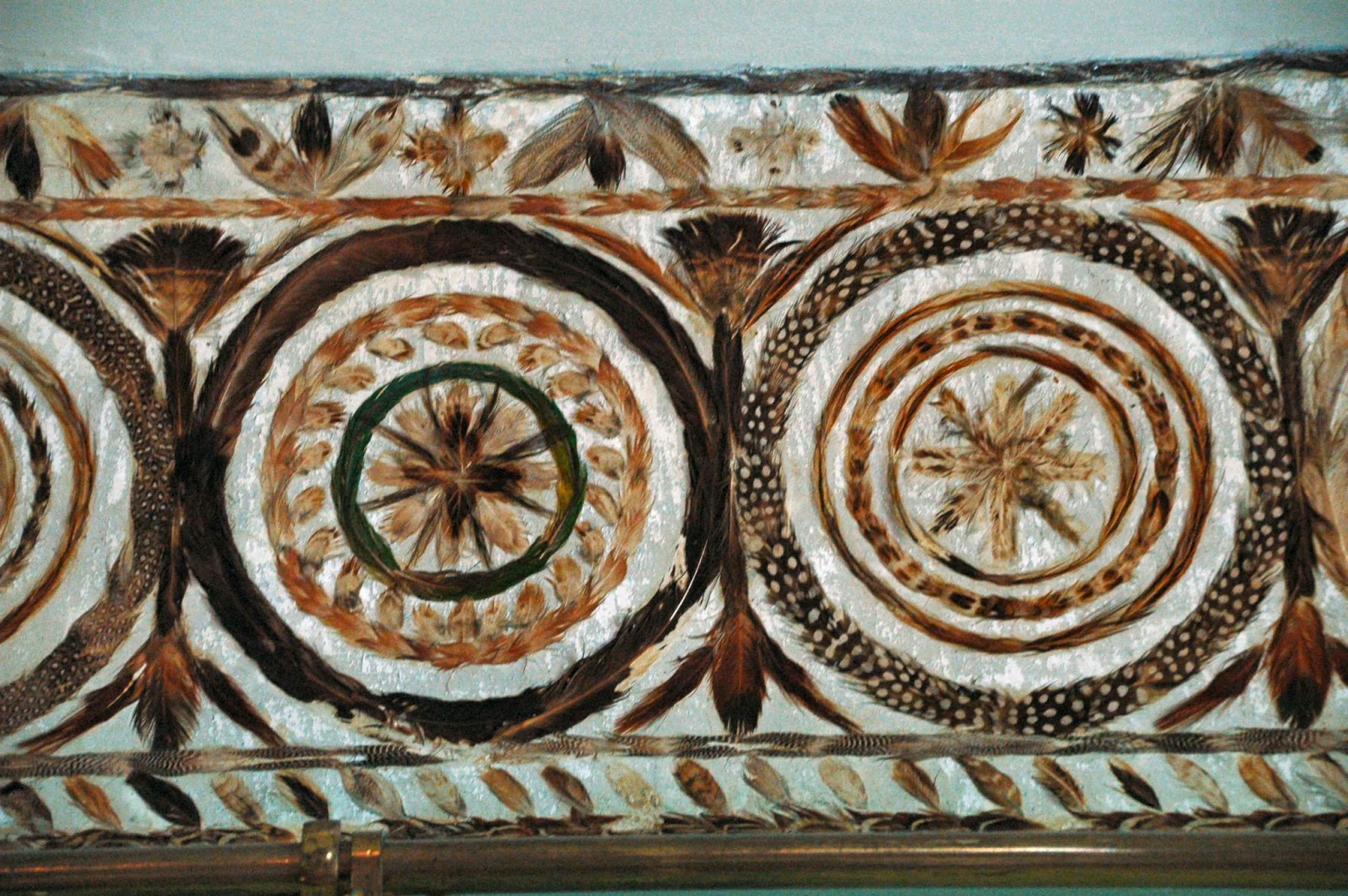Today was mainly travel — we are trying to set ourselves up for Stonehenge in a couple of days. We drove eastwards, towards Exeter — quite a way in English terms (a drop in the bucket for Aussies!). Our first destination was A La Ronde, a very quirky late 18th century house built by two very rich maiden cousins after they returned from their Grand Tour of Europe (in a time when only males made this journey!). They had been much impressed by the octagonal basilica in Ravenna, so they decided to base their home on this design. The interior room is indeed octagonal, but the exterior goes one better — it is hexadecagonal! 16 sides! And it works in its own eccentric way.
The house had another quirk — it was only to be left to unmarried women, and any who subsequently married were to be evicted. This only really worked for about 40 years, and meant the house could only be passed sideways, to unmarried female relatives. After about 1840, this proved to be impossible and it came into the hands of a male relative, a defrocked clergyman, who still called himself the Rev. Oswald Reichel. He made considerable alterations to the house — all positive! — and made the upstairs a most liveable area, as opposed to the simple storeroom it was previously. He also made the most of the views out to the River Exe estuary. Most of the contents of the house reveal the Parminter cousins' ability to hoard souvenirs.
They also were wonderful craftswomen, who created friezes in the house by gluing bird feathers to the cornices and, having seen a shell grotto in Italy, they set up a large shell gallery in what would have been the attic. This gallery is so fragile today that it is not directly accessible, but there is an interactive computer display to allow you to explore it virtually.
They also were wonderful craftswomen, who created friezes in the house by gluing bird feathers to the cornices and, having seen a shell grotto in Italy, they set up a large shell gallery in what would have been the attic. This gallery is so fragile today that it is not directly accessible, but there is an interactive computer display to allow you to explore it virtually.
So, after a couple of hours of exploring the epitome of English eccentricity, we left Exmouth and pointed ourselves towards a more classical destination — Thomas Hardy's Cottage, the birthplace of Thomas Hardy, near Dorchester. It took a while, and it was within an hour of closing when we got there. This was enough time to look over a 6-room cottage and its garden. We went through the place, and had a good conversation with the people who were gathered in the parlour, just chatting. This is the way of the Hardy place — you relax and enjoy the conversations, as the Hardys did in the 1800s. The parlour was the most-used room in the house then, and it still is now! The Hardys were a most musical family, as could be seen from the violins, recorders and mandolins evident downstairs. We were able to visit the room in which he was born — and in which, on one fateful morning, he was found sound asleep in his crib with a live snake lying beside him! His own room, as he grew up, was the one next to his parents' room. There's nothing really much to see — as with most writers, the home is of interest when you want to see his origins, but it was what he did with his imagination later on that really tells.
We left the cottage as it closed at 5pm, and went out to a layby we had seen on the way to the cottage — really quite close. We didn't want to go too far, as Hardy's home as an adult is in Dorchester, and we can visit it tomorrow before beginning to indulge in older art and culture, as we explore various incised chalk figures in the Dorset and Wiltshire areas, before going on to the splendour of Stonehenge.
Distance driven — today, 94 miles ( 151 km ); to date, 7,134 miles ( 11,481 km )









No comments:
Post a Comment